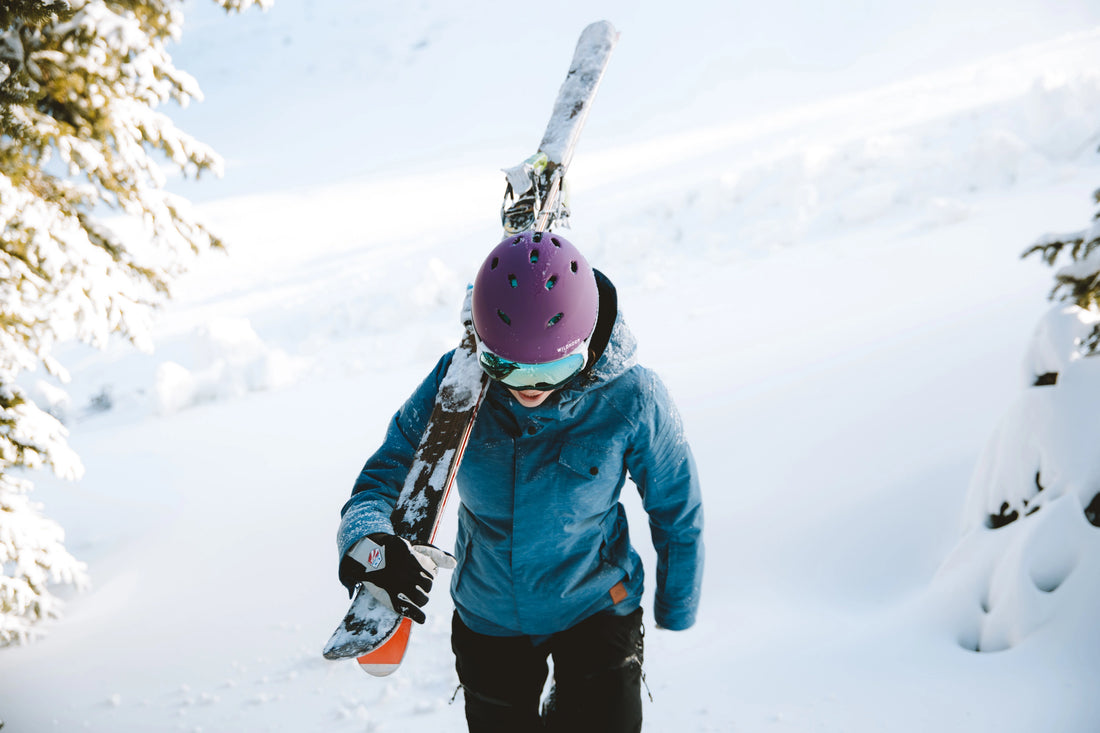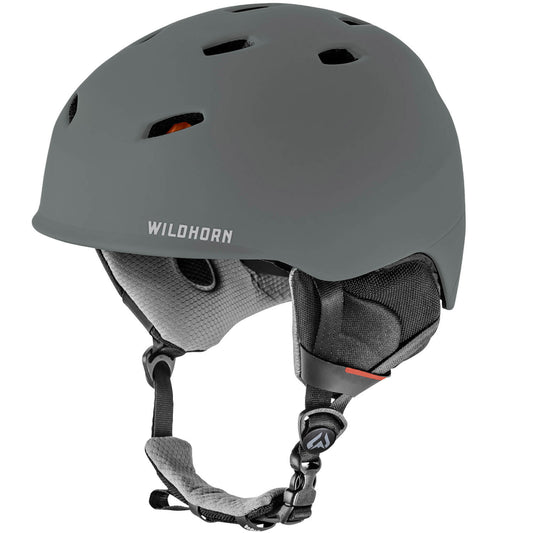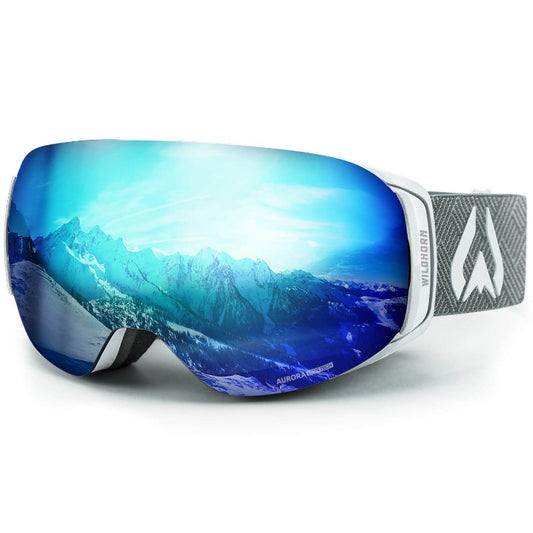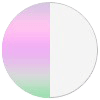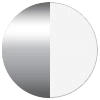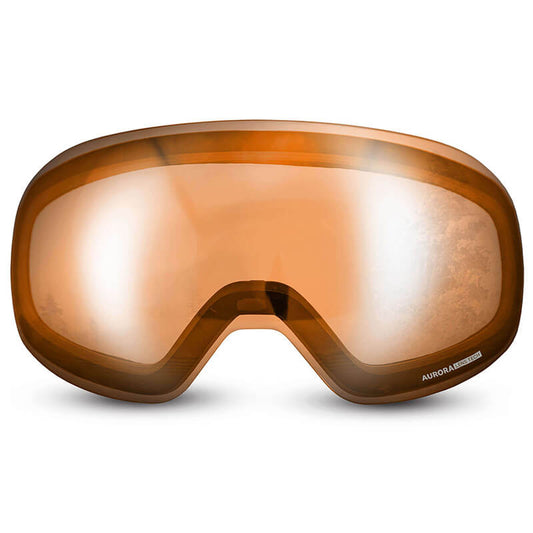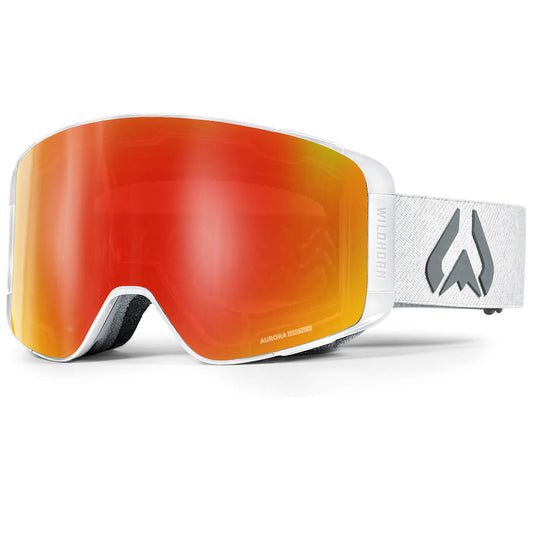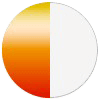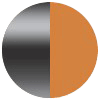This buyer’s guide for ski helmets focuses on ALL the information you need to buy a ski helmet. Skiers of all skill levels deserve a comprehensive guide that will help them optimize for maximum safety and quality when choosing a helmet.
That’s where we come in.
Our Ultimate Ski Helmet Buyer’s Guide will teach you everything you need to know: from the materials to finding the perfect helmet for you. We haven’t left anything out, so sit back and enjoy learning about your next favorite purchase.
What Are the Safety Features of Ski Helmets?

A ski helmet has one purpose: to keep you safe! Comfort and convenience are also important priorities. Thankfully, industry standards objectively verify if a ski helmet design is safe to use. To confirm that your helmet is up to industry standards, always check that it is certified before buying.
Safety Certifications
There are two common safety standards in the U.S. for snow helmets: CE-EN1077 (European) and ASTM F-2040 (American). These two certifications ensure helmets are built and tested properly. Professionals measure impact testing, stability of materials, construction, shape, and other factors. If your helmet passes either/both of these tests, you’ll know it has the safety features it needs.
Safety Features
Different safety features depend on the type of ski helmet (see below), but most are universal. Ear pads and chin straps are common, but more so, there is a difference in materials that help improve comfort. When good materials are used, it eliminates any annoyance from stiff or uncomfortable pads. For maximum protection, make sure your chin straps are buckled at all times during a run. Your ear pads should fit snugly against your head to protect your ears and help keep you warm. A good snow helmet will cover your entire head and not obscure vision. Manufacturers implement some extra safety measures, like MIPS, to higher-end helmets. The quality of the head form is also a safety feature in itself. Head form is the way it fits ergonomically. This improves the comfort but also stability of the helmet.
What Is MIPS?
MIPS is a technological advancement to ski helmets. The Multi-directional Impact Protection System (MIPS) is a patented thin, plastic liner inside a helmet that allows it to slide naturally during a rotational impact. In other words, if you fall and hit your head, your helmet will rotate to disperse the momentum. This type of helmet is great because it gives protection against a crash that hits multiple areas of your head, which is very common. Many helmets only function on a single directional level. We think MIPS is such a novel idea that we designed a helmet that includes it! Check it out now. Helmets without MIPs can also be safe; MIPs merely adds some bonus protection against certain types of rotational impact falls.
Wildhorn Highline MIPS Snow Helmet
Okay, we’ve discussed safety features for helmets. Now let’s dive into what materials make a helmet.
What Is the Best Material for a Ski Helmet?
Ski helmets, at a basic level, are made up of a combination of plastic and foam components. Most consist of a hard outer shell encasing a foam inner layer. The outer shell is often made of ABS plastic shell or polycarbonate liner, while the inner layer is made of expanded polyethylene foam, also known as EPS. EPS is a molded semi-rigid, non-crosslinked, and closed-cell type of polyethylene foam—which is a very efficient material for reducing injury by absorbing a high amount of energy created from impacts. Some helmets will feature more customized materials, like a helmet with Koroyd, for example. The form these materials take and the process of putting them together depends on the type of snow helmet.
What Are the Different Types of Ski Helmets?
There are a few different types of snow helmets used for distinct things. For example, if you are going on a cross-country skiing trip, you’ll want a different helmet than someone who is racing. The three main types of helmets are hard shell/ABS, in-mold, and soft shell/EPP.
1. Hard Shell/ABS
Acrylonitrile butadiene styrene, or ABS, is a durable plastic that works well in low temperatures. It is rigid and energy absorbent. Hardshell snow helmets have a EPS (styrofoam) center surrounded by a shell of ABS plastic. These helmets are strong and scratch-resistant yet affordable. Because they’re better for straight-on hits, they tend to be heavier and larger than in-mold helmets.
2. In-Mold
In-mold ski helmets are made by molding the EPS foam at high temperatures while the PC sheet is pliable. This process allows for better shock absorption because the helmet crushes on impact instead of rebounding. Although they are more expensive, in-mold models are lighter and firmer than other options. These helmets are overall more advanced and higher-end. All of our snow helmets at Wildhorn are in-mold.
3. Soft Shell/EPP
Soft-shell snow helmets are made of different materials than the other types. EPP foam (expanded polypropylene) is different from EPS foam because it recovers its shape. This means that an EPP helmet would not necessarily break after a crash and you could use it again. Soft shell helmets are made of two thick layers of foam with different densities. They do not give as much protection to the wearer in the event of a major accident, but they can survive multiple minor hits. These helmets are generally bulkier with less ventilation.
Although different in build, all the types of ski helmets have passed the required safety certifications (see above), so you will be safer regardless of which one you choose. A helmet exists for every budget and scenario.
How Much Should a Ski Helmet Cost?

The price of a ski helmet depends on many factors, including materials, finishes, additional safety technology, and the brand. There is not a one-size-fits-all answer for how much a helmet should cost because it depends on what you see as a priority. The general price range is as wide as $30-$300, with the average being inside the $70-$150 range. You can find great options for a lot less than luxury prices. Remember, in-mold helmets will be more expensive as well as helmets with extra safety features like MIPS.
At Wildhorn, we work to keep our helmets at an affordable price, while also keeping you as safe as possible. We have our best-selling five-star Drift helmet that’s double-certified for safety, with tons of cool specs. For those who want additional rotational protection, we also offer a MIPS snow helmet. Our youth ski helmet has all of the safety features we give to adults and it comes with goggles, too. To check out our prices, see our collection of ski helmets now.
Since the price of your helmet will depend on the features it has, let’s go over all of the different spec options.
Ski Helmet Finishes
Helmets will have different finishes, but here are some of the options:
- Ski Goggles compatibility
- Magnetic buckles
- Audio compatibility
- Camera mounts
- Adjustable fit systems
- Ventilation systems
- Visors
- Ear pads
- Matte vs gloss colors
How to Spot a Quality Helmet
The number of helmets available for you to choose from is limited only by the time you have to find them. Because of this, it’s important to be able to narrow down your options. You can spot a good helmet because it will have certain characteristics. These include safety certifications, high reviews, color options, customizable fit and ventilation, customer service, expert endorsement, and more! Use the information from this buyer’s guide to find the perfect ski helmet for you. It’s not merely about style and safety; you have to keep comfort and fit in mind, as well.
What Are the Different Sizes of Ski Helmets?
Once you've found your dream ski helmet, the next step is to check that it fits! Companies have different sizes of helmets, but they’re all based on the same measurements. To find out what size you are, simply measure the diameter of your head a centimeter above your eyebrows. Find your measurement in centimeters, and check the size guide for your specific helmet. Adjustable fitting is a definite plus because you can make the helmet your exact size.
Here’s Wildhorn’s Snow Helmet Size Guide:

The Shake Test
To check that a helmet fits, use the industry test we affectionately named “the shake test.” While your helmet is on your head correctly in place, shake your head a lot without the buckles done up. If the helmet fits correctly, it will stay on and not move around but still feel comfortable. While the straps are done up, they should be snug but not restrictive. This will guarantee your helmet is right where you need it to be in case of an accident, but it won’t get in the way otherwise.
When Should I Replace My Ski Helmet?
If you’re in no serious accidents, the consensus is that you should replace your ski helmet every five years. However, every snow helmet needs to be replaced after a crash or if you notice any cracks. Some EPP helmets are built to withstand more than one hit, but always be cautious. Be sure to replace any broken buckles or ripped liners to prolong a helmet’s life. Different companies will have different policies on helmet durability, so know your brand. As long as you invest in a good helmet and do regular maintenance, your helmet can last you a long time.
Wow, that was a lot of information! We told you it would be the Ultimate Buyer’s Guide. If you have any questions, feel free to contact us. Or, to buy your premium helmet, go to our Snow Helmet Collection.



